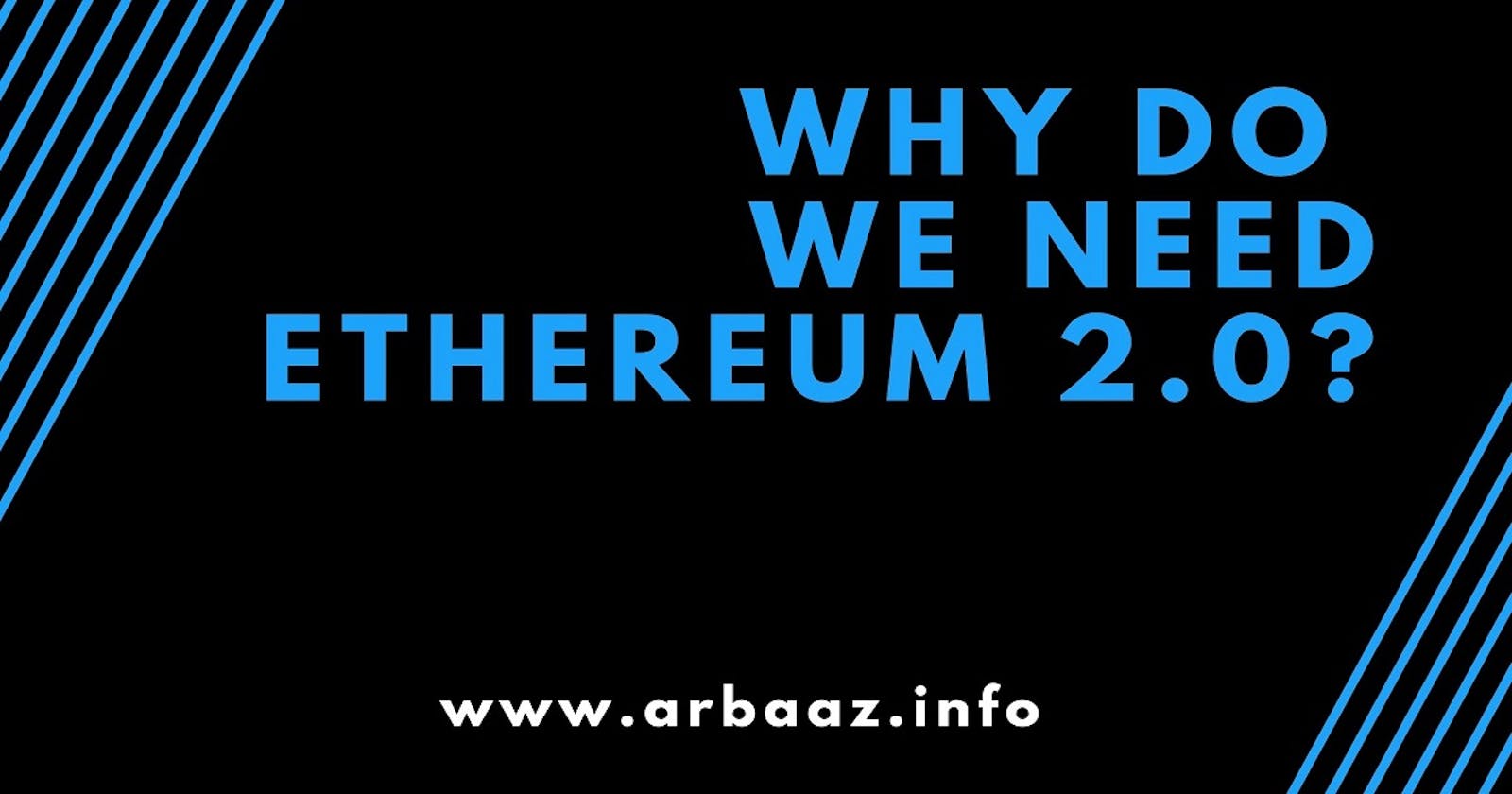Ethereum is currently in the process of moving from the current Ethereum architecture(Proof of Work) to Ethereum 2.0 (Proof of Stake).
Ethereum 2.0 is the biggest upgrade to the Ethereum mainnet since the launch of Ethereum back in 2015. Ethereum 2.0 comes with some big improvements to the Ethereum blockchain to tackle some of its problems inherent from day one. In this post, we will learn what the issues of Ethereum are and why we need Ethereum 2.0.
Proof of Work
The Ethereum Blockchain currently uses the Proof of Work mechanism to reach consensus. In Proof of Work, miners compete with each other to solve a cryptographic puzzle. The miner who solves the puzzle first gets a reward for mining the block.
In order to become a miner, an Ethereum user must set up a full node on his/her computer. They also need to have some expensive hardware(GPUs/ASICs) that will ensure they solve the puzzle before other miners. This results in consumption and wastage of massive amount of electricity.
The problems with Ethereum 1.0
The current architecture of Ethereum (PoW) makes it extremely secure, there is no denying that. But the current Ethereum architecture also happens to have some flaws.
For example, Scalability and Accessibility are two of the biggest flaws of the current Proof of Work Ethereum Blockchain. The main goal of Ethereum 2.0 is to overcome these flaws of Ethereum 1.0. It plans to do so by moving from Proof of Work to Proof of Stake Consensus mechanism.
Scalability
The current Ethereum Blockchain mines blocks sequentially, with a limit on the size of data that can be added to a block. This is a problem because it restricts or limits the amount of data that is processed in a given amount of time.
When the number of transactions to be processed exceeds the amount of data that can be added to a block, many transactions have to wait for subsequent blocks to be confirmed. And hence, the current Ethereum architecture is not very scalable to handle many transactions. Ethereum 2.0 solves this problem using Shard Chains.
Accessibility
It has become very difficult for an individual to run a full node and start mining new blocks on the Ethereum blockchain. The mining hardware is quite expensive for an individual to start in the first place.
Moreover, a miner also needs to reside in an area where the electricity costs are comparatively less because of the energy consumption in the entire process of PoW mining.
This however, becomes profitable for companies and mining pools. Governments usually charge businesses and companies comparatively less for their electricity consumption. Normal individuals cannot compete with these companies and this leads to centralization of power in the mining process.
Proof of Stake in Ethereum 2.0 will try to reduce the centralization of power and will make mining more accessible to individuals interested in validating the blocks.
That is it for this post. I hope you found it useful and learnt something new.
Feel free to reach out on Twitter(@ar6aaz) or Instagram(@theblockchainblog)
Until next time.

